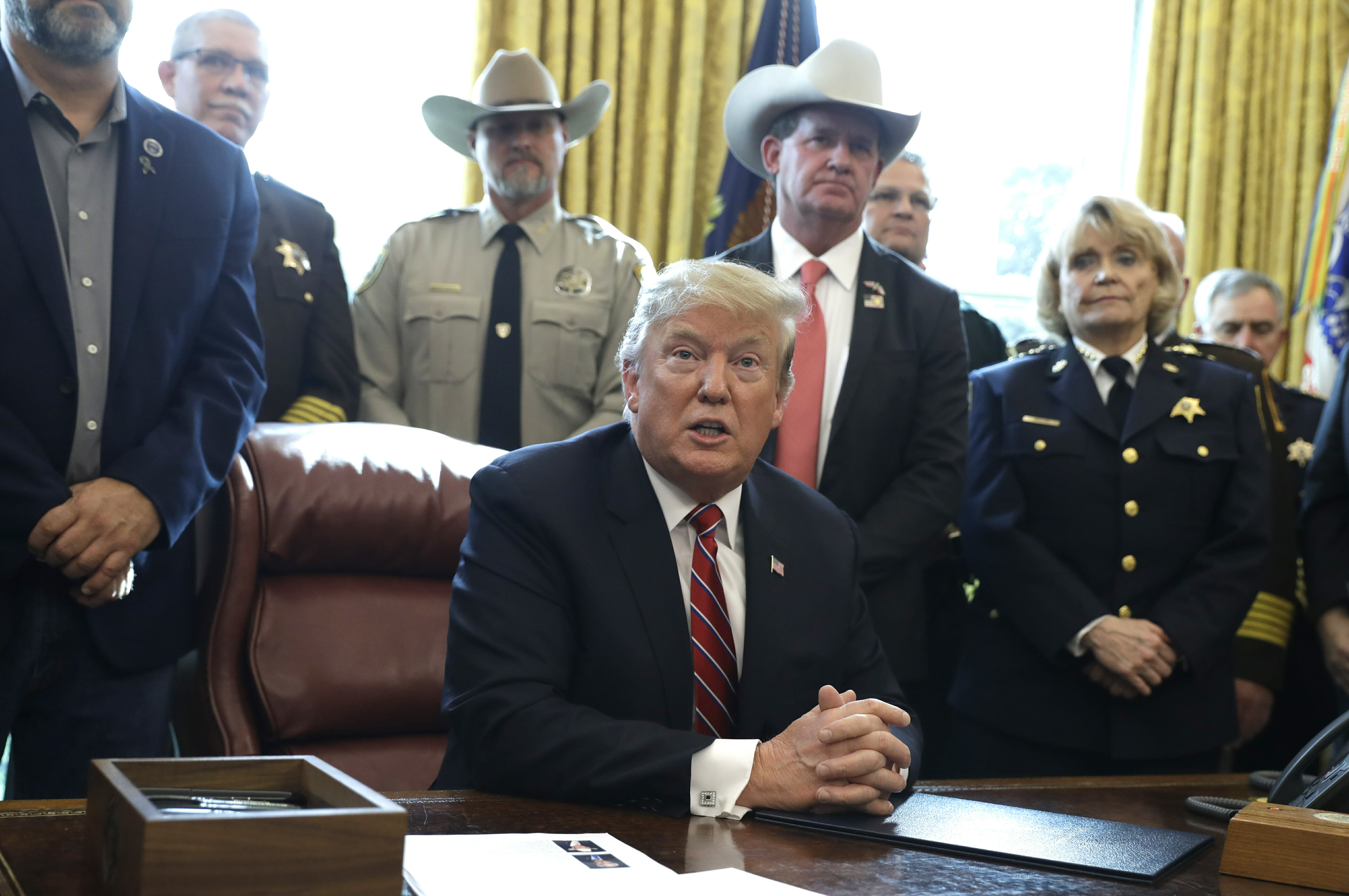
Beyond veto: Trump seeks more work-arounds to avoid Congress
WASHINGTON (AP) — President Donald Trump’s first veto was more than a milestone. It signals a new era of ever perilous relations between the executive and legislative branches of government.
Trump’s agenda was stymied even before his party lost unified control of Washington at the start of the year and he has grown increasingly frustrated by his dealings with Congress, believing little of substance will get done by the end of his first term and feeling just as pessimistic about the second, according to White House aides, campaign staffers and outside allies.
Republicans in Congress are demonstrating new willingness to part ways with the president. On the Senate vote Thursday rejecting the president’s national emergency declaration to get border wall funding, 12 Republicans joined Democrats in voting against Trump.
The 59-41 vote against Trump’s declaration was just the latest blow as tensions flare on multiple fronts.
Trump tweeted one word after the vote: “VETO!” And he eagerly flexed that muscle on Friday for the first time, hoping to demonstrate resolve on fulfilling his 2016 campaign pledge.
GOP senators had repeatedly agitated for compromise deals that would give them political cover to support Trump despite their concerns that he was improperly circumventing Congress. But the president was never convinced that any of the proposals ensured the resolution would be defeated, said a White House official who spoke on condition of anonymity to discuss internal thinking.
A last-ditch trip to the White House by a group of senators Wednesday night only irritated Trump, who felt they were offering little in the way of new solutions.
As the vote neared, Trump repeatedly made clear that it was about party fealty and border security and suggested that voting against him could be perilous.
“It’s going to be a great election issue,” he predicted.
Looking past the veto, Trump’s plans for future collaboration with Congress appear limited. With the exception of pushing for approval of his trade deal with Mexico and Canada, the president and his allies see little benefit for investing more political capital on Capitol Hill. Trump ran against Washington in 2016, and he is fully expected to do so again.
Trump once declared that “I alone can fix it.” But that was before getting hamstrung in Washington, and he is now exploring opportunities to pursue executive action to work around lawmakers, as he did with his emergency declaration on the border wall. He is directing aides to find other areas where he can act — or at least be perceived as acting — without Congress, including infrastructure and drug prices.
Trump made his intentions clear recently as he assessed that Democrats would rather investigate him than cooperate on policy: “Basically, they’ve started the campaign. So the campaign begins.”
His dealings with Congress were inconsistent even when Republicans controlled both chambers, and he has made few overtures to Democrats since they won control of the House.
Trump initially predicted he could work across the aisle, but that sentiment cooled after the bitter government shutdown fight and in the face of mounting investigations. His frustrations are evidence of the difficulty that the Washington neophyte and former business executive has had with the process of lawmaking, and the challenges yet to come.
The White House argues there are still opportunities for collaboration, listing ratification of the Canada-Mexico trade pact as a priority. But passage is anything but assured.
Trump’s ire has been directed at both parties for some time, aides said. He was upset with the Republicans’ performance during the recent congressional hearing featuring his former lawyer, Michael Cohen, telling allies that he was not impressed with their questioning.
Trump’s budget proposal this past week was viewed as a shot at Democrats, with its proposals to increase money for the border wall and cut to social safety net programs. The plan, which had little in the way of new or bipartisan ideas, was declared dead on arrival by Democratic House leaders.
Further stoking tensions, House Speaker Nancy Pelosi, D-Calif., invited NATO Secretary-General Jens Stoltenberg to address an upcoming joint meeting of Congress, in what was widely seen as a rebuke of Trump’s criticism of the trans-Atlantic alliance. The invitation was backed by Senate Majority Leader Mitch McConnell, R-Ky., and followed votes earlier this year in which Republicans voiced opposition to Trump’s plans to draw down U.S. troops in Syria and Afghanistan.
Presidential complaints about Congress — and efforts to find a workaround — are nothing new.
President Barack Obama in 2014 resorted to what became known as his “pen and phone” strategy.
“I’ve got a pen to take executive actions where Congress won’t, and I’ve got a telephone to rally folks around the country on this mission,” he said.
Obama’s strategy yielded years of executive orders and regulatory action, but many proved ephemeral when Trump took office and started unwinding them.
The Western Journal has not reviewed this Associated Press story prior to publication. Therefore, it may contain editorial bias or may in some other way not meet our normal editorial standards. It is provided to our readers as a service from The Western Journal.
Truth and Accuracy
We are committed to truth and accuracy in all of our journalism. Read our editorial standards.
Advertise with The Western Journal and reach millions of highly engaged readers, while supporting our work. Advertise Today.












